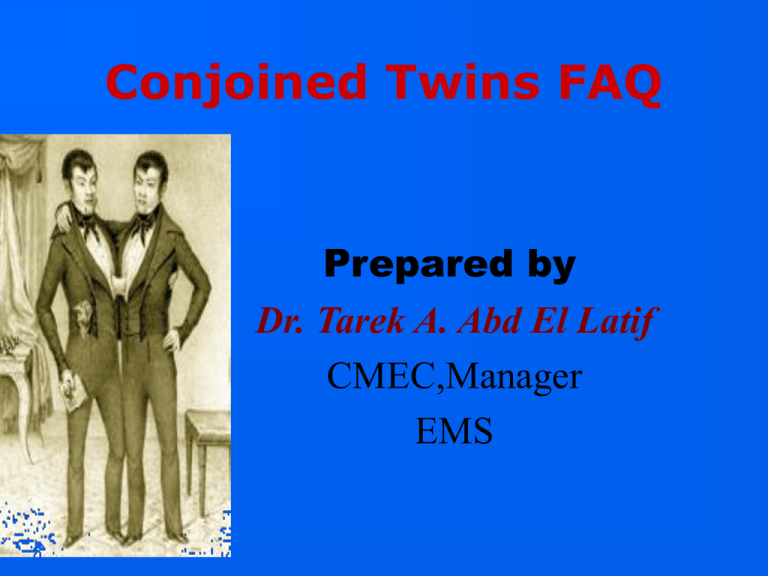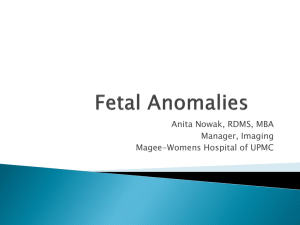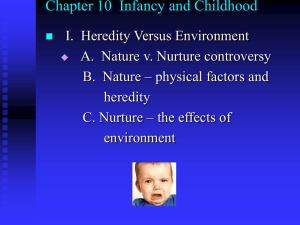
Conjoined Twins FAQ
Prepared by
Dr. Tarek A. Abd El Latif
CMEC,Manager
EMS
Conjoined Twins
What are conjoined twins?
•Conjoined twins are
monozygotic multiples that do
not fully separate from each
other due to the incomplete
division of the fertilized ovum.
•The individuals will be
connected at certain points of
the body, and may share tissue,
organs or limbs.
Conjoined Twins
• How does it happen?
•Monozygotic - also known as identical - twins
form when a single fertilized ovum splits into
two embryos.
• This split can happen anytime after
fertilization; as more time passes, the twins
are more likely to share commonalities.
•If the split occurs more than twelve days post
conception, the embryos do not fully divide
and the twins may share body parts .
Conjoined Twins
• How does it happen
• Like all Monozygotic twins,
conjoined twins are always
same sex (either both boys or
both girls).
• It's a fairly rare occurrence.
•
Exact statistics are not known,
but are estimated to be about 1
in 85,000 births.
• About 1 in 200 sets of identical
twins are born conjoined .
• It is estimated that seventy
percent of conjoined twins are
female.
Conjoined Twins
• What are Siamese Twins?
•Famed twins, chang and Eng Bunker, were born in
Siam (now Thailand) in the early 1800's, although
they eventually settled in the United States.
• As they traveled the world, they became known
as "the Siamese twins."
•While they were the first conjoined twins whose
medical history was documented, they were not
the first conjoined twins.
• Records reference a set of conjoined boys living
in Constantinople in 945 A.D.
• Another well-known set, Mary and Eliza
Chulkhurst, lived in England in the twelth century.
Conjoined Twins
• What are the types of conjoined twins?
TYPES OF CONJOINED TWINS:
• Conjoined twins are usually classified by the
point at which they are joined (the Greek
word pagos , meaning "that which is
fixed.") .
• There have been as many as three dozen
separate types identified in the last century.
The following basic classifications can be
combined to more closely define individual
cases.
Conjoined Twins
• What are the types of conjoined twins?
TYPES OF CONJOINED TWINS:
Those three dozen separate types are:
1. Conjunction never involving heart or
umbilicus
2. Conjunctions Always involving the
Umbilicus (Midline Conjunctions)
3. Rare forms of conjoined twins, having
different patterns.
Conjoined Twins
•
What are the types of
conjoined twins?
TYPES OF CONJOINED TWINS:
Those three dozen separate types are:
1.
Conjunction never involving heart or
umbilicus
2.
Conjunctions Always involving the
Umbilicus (Midline Conjunctions)
3.
Rare forms of conjoined twins, having
different patterns.
Conjoined Twins
• What are the types of conjoined twins?
1. Conjunction never involving heart or
umbilicus:
• I- Craniopagus.
- Cranial union only.
- 2% of all conjoined twins.
• II- Pygopagus.
-
Posterior union of the rump
-
19% of all conjoined twins.
Conjoined Twins
• What are the types of conjoined twins?
2. Conjunctions Always involving the Umbilicus
(Midline Conjunctions)
• I- Thoracopagus
• II- Cephalopagus
• III- Parapagus
• IV- Ischopagus
• V- Omphalopagus
Conjoined Twins
• What are the types of conjoined twins?
2. Conjunctions Always involving the Umbilicus
(Midline Conjunctions)
• I- Thoracopagus:
-
Anterior union of the upper half of the
trunk.
-
They are the most common form of
conjoined twins (about 35%).
-
It always involves sharing the heart.
Conjoined Twins
-
• What are the types of conjoined twins?
2. Conjunctions Always involving the Umbilicus
(Midline Conjunctions) .
•II- Cephalopagus:
-Anterior union of the upper half of the
body with two faces on opposite sides of a
conjoined head.
- Extremely rare.
-The heart is sometimes involved.
- A combination of types I and II is called
cepholothoracopagus.
skeleton of cephalothoracopagus
twins delivered in Philadelphia in
1851. This skeleton has four feet .
Conjoined Twins
• What are the types of conjoined twins?
2. Conjunctions Always involving the Umbilicus
(Midline Conjunctions) .
III- Parapagus:
-Lateral union of the lower half,
extending variable distances
upward.
- Sometimes called diprosopus.
- about 5% of all conjoined twins.
- Heart sometimes involved.
Skeleton of parapagus twins, showing fusion of
the lower half.
Conjoined Twins
• What are the types of conjoined twins?
2. Conjunctions Always involving the Umbilicus
(Midline Conjunctions) .
IV- Ischopagus:
- Anterior union of the lower half
of the body.
- 6% of all conjoined twins.
- Heart is not involved.
•V- Omphalopagus:
- Anterior union of the midtrunk.
- 30% of all conjoined twins.
Death cast of ischiopagus conjoined twins
who died at age 13 months, in November , 1871
.
Conjoined Twins
• What are the types of conjoined twins?
3. Rare forms of conjoined twins, having
different patterns:
• I- Parasitic twins.
- Asymmetrical conjoined twins, one twin being small,
less formed, and dependent upon the other.
• II- Fetus in fetu.
- Asymmetrical conjoined twins, one twin being small,
less formed, and dependent upon the other.
Conjoined Twins
• What is the prognosis for conjoined twins?
•The prognosis depends on how the twins are
connected.
•It is estimated that 40-60% are born stillborn.
35% survive 24 hours or less.
• For those that do survive, their parents will face
difficult decisions regarding their future.
• Some conjoined twins live successful lives
despite the unique challenges they face.
•Others are plagued by medical complications due
to shared organs and vital systems.
• Others are candidates for surgical separation.
Conjoined Twins
• How are conjoined twins separated?
•Since the late twentieth century, many
medical advances have resulted in the
successful surgical separation of conjoined
twins.
•According to Nancy Segal in her
book'"Entwined Lives," there have been
approximately 200 attempted surgical
separations of conjoined twins.
•Three-quarters of the procedures since 1950
have resulted in one or both of the twins
surviving.
Conjoined Twins
• What are the risks involved with surgical
separating adult conjoined twins?
•In general, the greatest risks to conjoined twins during
and after separation are anesthesia and surgical
complications.
•During surgery, both twins receive anesthesia using
two separate sets of equipment.
•Surgical complications can include formation of blood
clots in the newly constructed blood vessels,
intracranial bleeding, heart complications and infection.
• The critical period is three to four days after surgery.
THANK YOU
Sources of the presentation:
www.twinstuff.com










